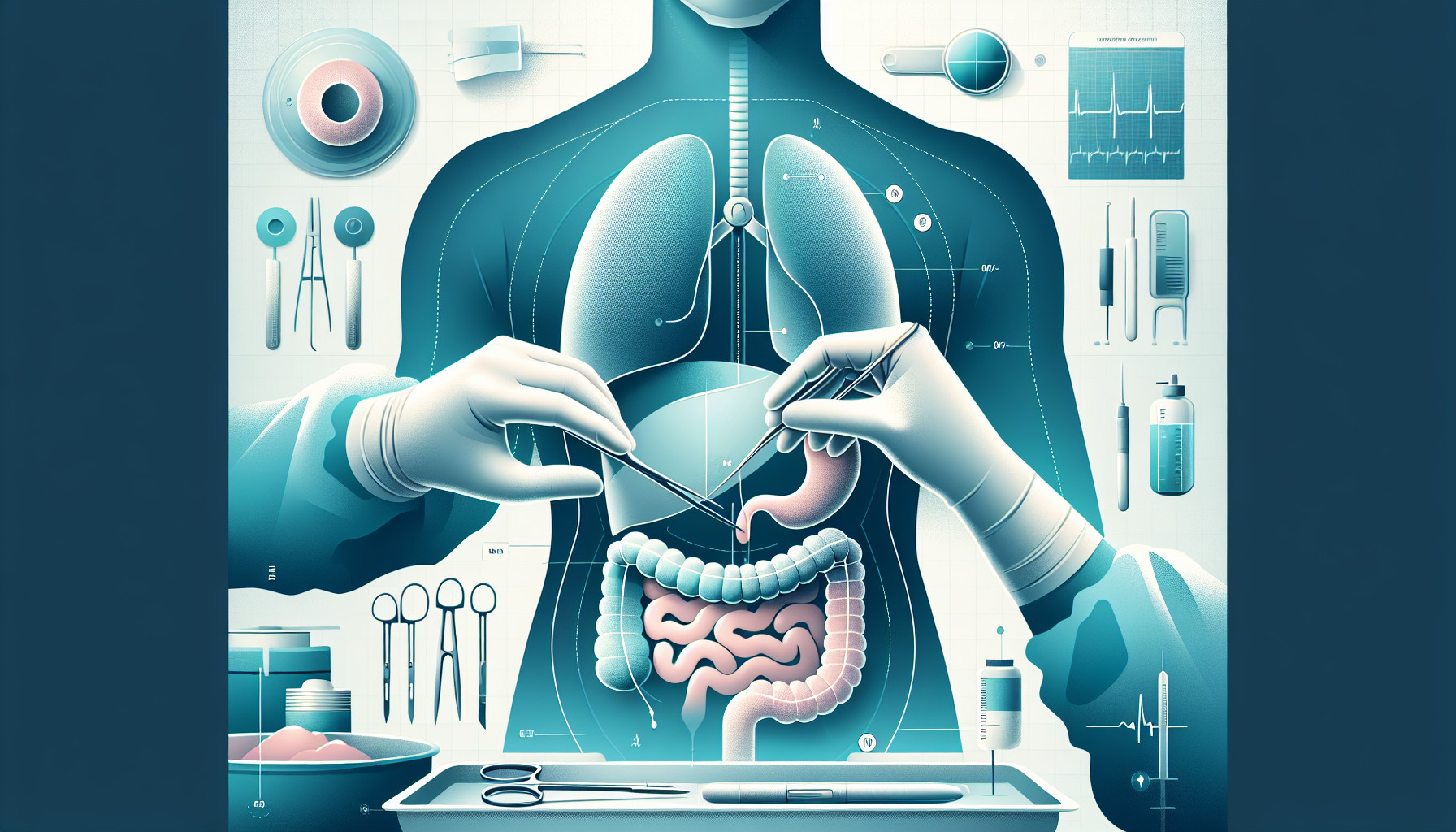Our Summary
This research paper presents a review of 32 cases of large hiatal hernia repair, being carried out at the same time as a weight loss surgery called laparoscopic sleeve gastrectomy. This repair process used a material called Urinary Bladder Matrix (UBM) as reinforcement. Currently, there is no agreed method on how to handle these types of hernias when performing the weight loss procedure.
The review showed that each repair was successful and completed with ease during the weight loss operation. There were no complications or need for further surgery. The patients were followed up for a year on average to check if their symptoms of gastroesophageal reflux disease (GERD), a chronic digestive disease, had improved.
The results revealed that the patients had very minimal GERD symptoms and that the repair was still intact. Therefore, this method of using UBM for reinforcement during hiatal hernia repair in combination with weight loss surgery seems to be a good solution. It could lead to a lasting repair with reduced GERD symptoms.
FAQs
- What is the significance of using Urinary Bladder Matrix (UBM) in large hiatal hernia repair?
- What were the results of the review of 32 cases of large hiatal hernia repair done in conjunction with laparoscopic sleeve gastrectomy?
- Did the combination of hiatal hernia repair and weight loss surgery result in any complications or need for further surgery?
Doctor’s Tip
One helpful tip that a doctor might tell a patient about hiatal hernia repair is to maintain a healthy weight and lifestyle to prevent the hernia from recurring. This includes eating a balanced diet, avoiding large meals, and not lying down immediately after eating. Regular exercise and avoiding smoking can also help prevent complications from the hernia repair. Additionally, following up with your doctor for regular check-ups and monitoring of symptoms is important for long-term success.
Suitable For
Patients who are typically recommended for hiatal hernia repair are those who experience symptoms such as heartburn, regurgitation, chest pain, difficulty swallowing, and acid reflux. These symptoms can significantly impact a patient’s quality of life and may require surgical intervention to alleviate them. Additionally, patients who have a large hiatal hernia, which is when the stomach pushes through the diaphragm into the chest cavity, may be recommended for repair to prevent complications such as strangulation or obstruction.
In some cases, hiatal hernia repair may also be recommended for patients undergoing weight loss surgery, such as laparoscopic sleeve gastrectomy, to address any existing hernias and prevent potential complications during the weight loss procedure. Patients with a combination of hiatal hernia and obesity may benefit from having both surgeries performed simultaneously to address both issues effectively.
Overall, patients who are experiencing significant symptoms related to hiatal hernia or who have a large hernia that may lead to complications are typically recommended for repair. It is important for patients to consult with their healthcare provider to determine the most appropriate treatment plan based on their individual circumstances and medical history.
Timeline
Before the hiatal hernia repair:
- Patient experiences symptoms of GERD such as heartburn, chest pain, difficulty swallowing, and regurgitation.
- Patient undergoes diagnostic tests such as endoscopy, barium swallow, and pH monitoring to confirm the presence of a hiatal hernia.
- Treatment options such as medication, lifestyle changes, and dietary modifications are attempted to manage symptoms.
After the hiatal hernia repair:
- Patient undergoes laparoscopic sleeve gastrectomy for weight loss, with simultaneous hiatal hernia repair using UBM reinforcement.
- The repair is successful and completed without complications during the weight loss surgery.
- Patients are followed up for a year to monitor GERD symptoms post-repair.
- Results show minimal GERD symptoms and intact repair, indicating a successful outcome of the procedure.
- The combination of hiatal hernia repair with weight loss surgery using UBM reinforcement shows promise in reducing GERD symptoms and providing lasting repair.
What to Ask Your Doctor
Some questions a patient should ask their doctor about hiatal hernia repair include:
- What is a hiatal hernia and how does it affect my health?
- What are the potential risks and benefits of undergoing hiatal hernia repair surgery?
- How is hiatal hernia repair surgery performed and what is the recovery process like?
- Will I need any additional tests or evaluations before undergoing surgery?
- How long will the results of the repair last and are there any long-term complications to be aware of?
- Can hiatal hernia repair surgery be combined with other procedures, such as weight loss surgery?
- What type of reinforcement material will be used during the repair and why?
- What are the success rates of hiatal hernia repair surgery, especially when combined with weight loss surgery?
- Will I need to make any lifestyle changes or follow a specific diet after the surgery?
- How often will I need follow-up appointments to monitor my recovery and the success of the repair?
Reference
Authors: Sasse KC, Gevorkian J, Lambin R, Afshar R, Gardner A, Mehta A, Lambin JH, Shinagawa A. Journal: JSLS. 2019 Jan-Mar;23(1):e2018.00106. doi: 10.4293/JSLS.2018.00106. PMID: 30880900
